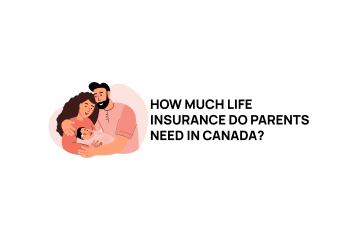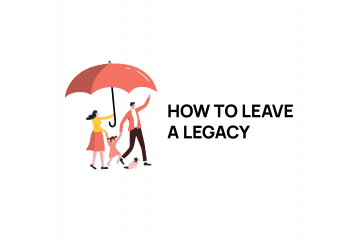Should I purchase life insurance for my children? This is an emotional decision for many Canadians – both pro and con. Let’s look at both sides, as well as throwing some numbers into the mix.
First, some Canadians simply prefer not to have this conversation at all. Being an intensely personal decision, the most expedient answer is simply no – carry on and don’t purchase life insurance on your children.
In This Article
- Children Don’t Earn An Income And Therefore Don’t Need Life Insurance.
- Insuring Their Insurability
- As A Gift
- Coverage Types – Children’s Protection Rider
- Coverage Types – Permanent/Term To 100
- Coverage Types – Quick Pay
- Coverage Types – Paid Up Values
Children Don’t Earn An Income And Therefore Don’t Need Life Insurance.
There’s a common misconception amongst consumers that since children don’t earn an income, therefore there’s nothing to insure. That adage is false. In fact, the primary purpose of life insurance on children when their young is to provide for loss of parent’s income. While all deaths are tragic, the loss of a child can lead to needing substantial time off of work for both parents. A life insurance policy won’t provide emotional support, but it will remove any financial pressure to return to work in order to meet your ongoing lifestyle costs.
Therefore you should consider insuring your children for an amount equal to about one to two years of your annual income for this purpose.

Insuring Their Insurability
Your children may eventually need life insurance – when they get older and have financial dependents of their own. So, should they wait? Or should you purchase a policy on their behalf now?
The reason to purchase a policy now so that they have coverage later, is because doing so guarantees their insurability – once that policy is in place, it can’t be revoked by the life insurance company even if your child becomes uninsurable in the future. You’re thus ensuring that when they need a policy in the future, that it’s already there.
The balance here is that until your child needs the life insurance in the future, the policy you put in place now can act as coverage for the purpose in the above section – insuring your income. Then once they do have the need for a policy, you can simply transfer the coverage to them and their coverage is seamlessly in place.
How much should you purchase for this purpose? Technically you might consider they might need in the future, but in practice most consumers don’t purchase that much. Most Canadians when insuring their children will simply purchase a smaller policy – often $100,000 or $250,000, just enough so that they have ‘something’ in the event of them becoming uninsurable. These policies are generally affordable and even if they don’t provide full coverage in the future, you’ve at least provided them a minimal amount to secure their family’s future.
Get a free quote
As A Gift
Parents, and often grandparents, will purchase policies on their children as a financial gift. It’s a way to provide them financial stability in the future, and demonstrates financial best practices on their parents or grandparents’ behalf. Life insurance as a gift is certainly arguable – but the comparison to be made here is – what’s a better gift; a life insurance policy, or a gaming console? In the short term a gaming console is going to be more appreciated, but in the long term we’ve found that Canadians are very happy when they’re older to have a life insurance policy that was gifted to them when they were younger.
Coverage Types – Children’s Protection Rider
Most term life insurance policies on parent’s lives can add a rider (or optional benefit) known as children’s protection rider (CPR). CPR benefits vary a bit by company but they generally:
- Provide coverage for all your children.
- Are available in small amounts, often capped at $50,000
- Expire when the children becomes an adult
- Can be converted when they become an adult to a permanent life insurance policy, without a medical exam (though this is done at smoker premiums).
- Typically very inexpensive coverage – it’s comparable to ‘term life insurance’ for children, with the term being ‘until they’re adults’.
Coverage Types – Permanent/Term To 100
The second choice is to simply lock in premiums for the child’s lifetime in their own policy. This can be done variously through a whole life policy, or a universal life insurance policy with guaranteed term to 100 costs (effectively the same as a term to 100 policy on your child).

Coverage Types – Quick Pay
A variation on the Permanent/Term to 100 is a quick pay life insurance policy. These are typically whole life policies so the coverage is level for life. However the premiums are structured so that the policy becomes fully paid up (no more premiums due) either in 10,15, or 20 years. Doing it this way means that when your child becomes and adult you gift them a life insurance policy with no further premiums due.
There’s a danger though. These types of quick pay policies generally have cash values – money refunded back to the policy owner if the policy is cancelled. If you gift the policy to your child when they’re still young, they may see the cash value as being of more value than the life insurance policy itself. This leads to the child cancelling the policy, taking the cash value and spending it – probably contrary to the reason you purchased the policy. Therefore if you purchase a policy on your child that has cash values we recommend that you maintain ownership of the policy until your child is old enough to see the value of the coverage as being more important than the value of the cash value if the policy is cancelled.
Coverage Types – Paid Up Values
Life insurance policies for children run over a long lifetime and effects of inflation can dramatically impact the value of a policy. As we noted above, if your child becomes uninsurable the policy that you purchased for them when they were younger may be the only life insurance they’ll ever have. In the event of your child being uninsurable, how do we protect against the long term impacts of inflation on the value of the coverage?
The answer is through a non-guaranteed attribute called ‘dividends’ available with some permanent life insurance policies. Dividends are simply a return of a portion or your premiums paid to you by the life insurance company each year, assuming that their life insurance policy investments, expenses, and mortality costs perform well.
These dividends can be structured to automatically add small amounts of additional life insurance coverage on your child each year. i.e. You pay your premiums -> Dividends issued -> small amount of additional coverage added to the policy. Basically, the coverage amount is expected to increase each year. And because these increases are generally roughly in line with inflation, structuring the policy in this way then allows the coverage amount on your child to grow with inflation over long periods of time.
So, should you purchase a life insurance policy on your child? Yes – it covers your income when your child is young, and guarantees the child’s insurability and ability to get a life insurance policy when they’re older. And you’ve seen that there’s a variety of choices available to you – from inexpensive CPR riders, to permanent life insurance policies whose coverage increases over time with inflation.
If you have more questions about purchasing life insurance on your child(ren) then please don’t hesitate to reach out to us or book a call with one of our licensed life insurance specialists.




